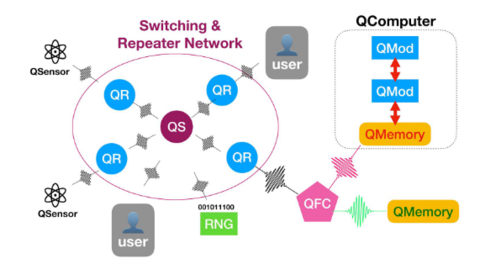Technologies for Quantum Networks

Ideally, quantum nodes at very large distances and possibly across the world need to be connected. Current technologies cannot support this goal. At present, based on proof-of-principle experiments, many material platforms capable of processing quantum information have been developed, with no clear “champion technology.” Some physical qubits appear best for storing quantum information, while others are best for manipulating and exchanging quantum information. Modular quantum systems in which different physical qubits are used for different purposes will likely be necessary to develop a scalable quantum network. The long-term viability of quantum networks hinges on technological advances that reliably link quantum devices together at a large scale.
Contacts
-
(301) 975-5887
-
(301) 975-4281
-
(301) 975-8473

